Brief

한눈에 보기
- The next recession and demographic changes will sharply reduce auto demand, just as electric cars, autonomous vehicles and new mobility services take off.
- The coming era of disruption poses two major risks for automakers: committing to a single course of action that ends up being the wrong one, and waiting too long to see how things play out while putting a bet on every possible outcome.
- Leadership teams can develop a strategy in uncertainty by investing in no-regret moves, developing options and hedges, and preparing for big bets. Winners will be those who pivot quickly and get out in front of change.
As the boards of automakers and their suppliers across the US, Europe and Asia review strategies for the coming decade, a frightening vision looms over them. Sometime in the next 12 to 18 months, a recession is likely. Soon after that, a demographic time bomb will go off, reducing permanently the number of new car buyers. And in six to eight years—one product cycle away—a rapid shift to electric and autonomous vehicles and shared mobility services could leave companies with billions of dollars in stranded assets—a shock that many may not survive.
Most companies are investing and forging partnerships to prepare for the disruptive changes ahead. However, no one can predict the timing and speed at which these events will happen. The unprecedented uncertainty will have huge repercussions. Sooner or later, companies will be saddled with manufacturing plants and other vital assets that can no longer earn expected returns. Add to that predicament a simultaneous and radical reduction in demand. Our research shows by the mid-2020s, US light vehicle sales could fall to the same level as in the 2008-09 recession, when GM and Chrysler declared bankruptcy and Ford reported a record $14.6 billion loss for 2008 (see Figure 1).
Structural demand for light vehicles in the US has fallen to 12.7 million a year, with further declines expected

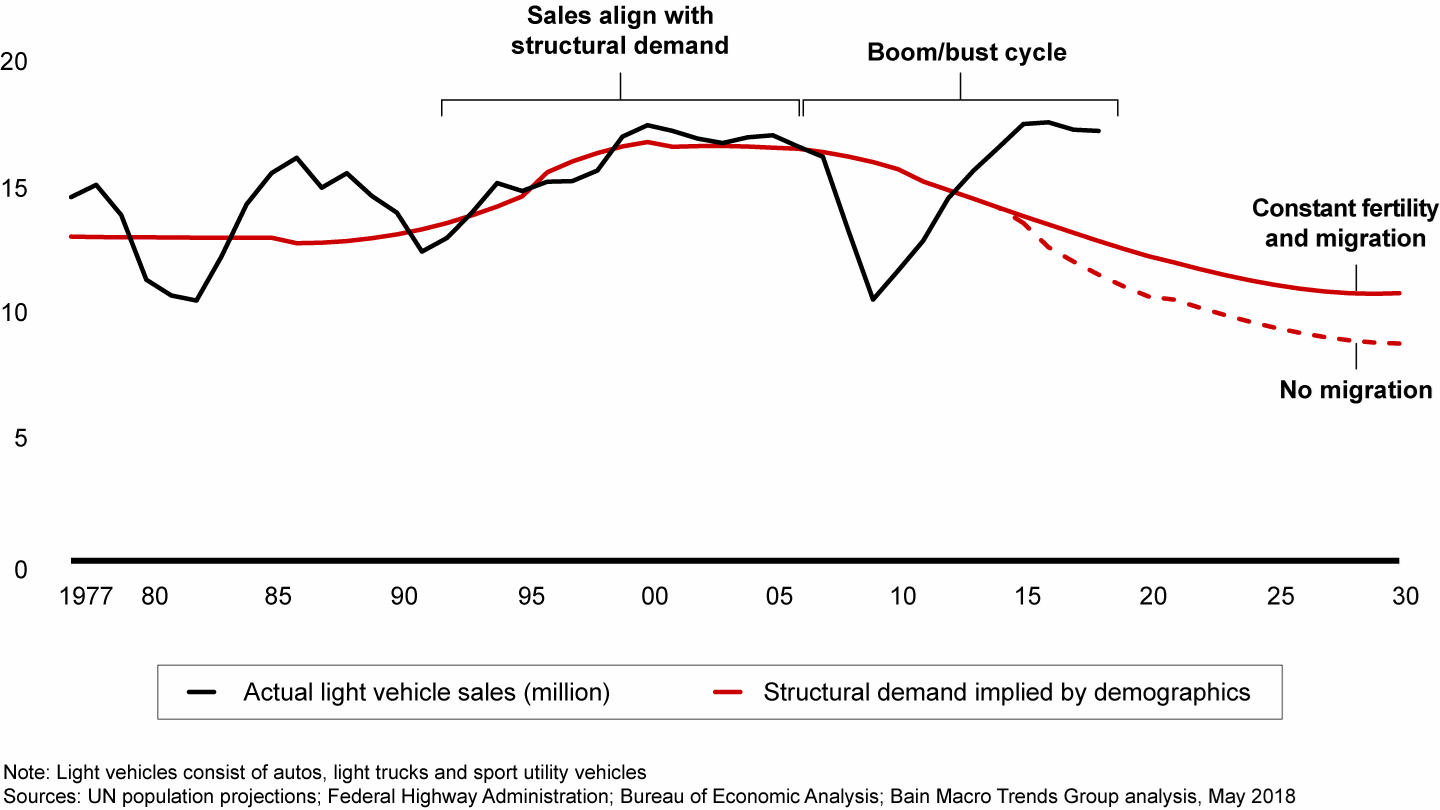
In times of enormous uncertainty, companies face two primary risks: One is to commit to a single course of action that ends up being the wrong one, and the other is waiting too long to see how things play out while putting a bet on every possible outcome. Leadership teams that have navigated successfully through periods of great uncertainty build flexibility into their decision-making process. They focus on the few risks that matter most, define future scenarios, and identify the critical trigger points that signal a swing from one outcome to another. As long as the future is unclear, they concentrate on making no-regret moves such as reducing costs and removing risks from balance sheets, while developing strategic options. They watch for key signposts to see the tipping points coming before the competition so they’re prepared to make big bets on new, fast-moving trends.
Companies that create a clear portfolio of options are more nimble in periods of uncertainty because they balance commitment and flexibility. Instead of basing a strategy on conditions at a discrete point in time, leaders engage in a continuous cycle of execute, monitor and adapt, redirecting the company toward the best opportunities over time. Automakers can increase their resilience now—before recession, demographics and technological disruption cut into demand—by improving cost structures, rethinking supplier relationships and commitments, streamlining physical assets and reviewing balance sheets, while developing options and staying alert to the signposts in the tumultuous stretch of road ahead.
The coming storm
While auto leadership teams prepare for technological disruption, few are focused on the possible double punch of a recession and shifting demographics that’s likely to slash sales before new technologies take off. That scenario could leave many companies weakened and some unable to survive the transition.
Our analysis shows the next recession and an aging population are likely to hit the US auto market first and hardest. These forces will affect global markets as well, with some variation in timing. By contrast, the shift to electric vehicles and new mobility services may come sooner to Europe and Asia and spread faster. While we’ve focused primarily on US data in this report, we expect the same set of factors to transform auto markets in Europe and Asia by the mid-2020s.
The recent boom in US auto demand, which largely offset the bust of the 2008-09 recession and has risen above the historic structural demand line, has obscured a pivotal demographic turning point as baby boomers move into retirement (see Figure 2). By the start of the 2020s, the population growth of 15- to 64-year-olds will decline to nearly zero (see Figure 3). Bain research shows that the underlying structural demand for light vehicles in the US, absent the impact of the great recession, would have been roughly 16 million in 2009 and 13.5 million in 2018. Our analysis shows that by 2025, demographic trends, absent other changes, will reduce total US vehicle demand to about 11.5 million. A decline in immigration rates could push down structural demand to about 10 million cars per year by 2025.
Total structural demand for vehicles in the US strongly correlates to the number of 15- to 64-year-olds

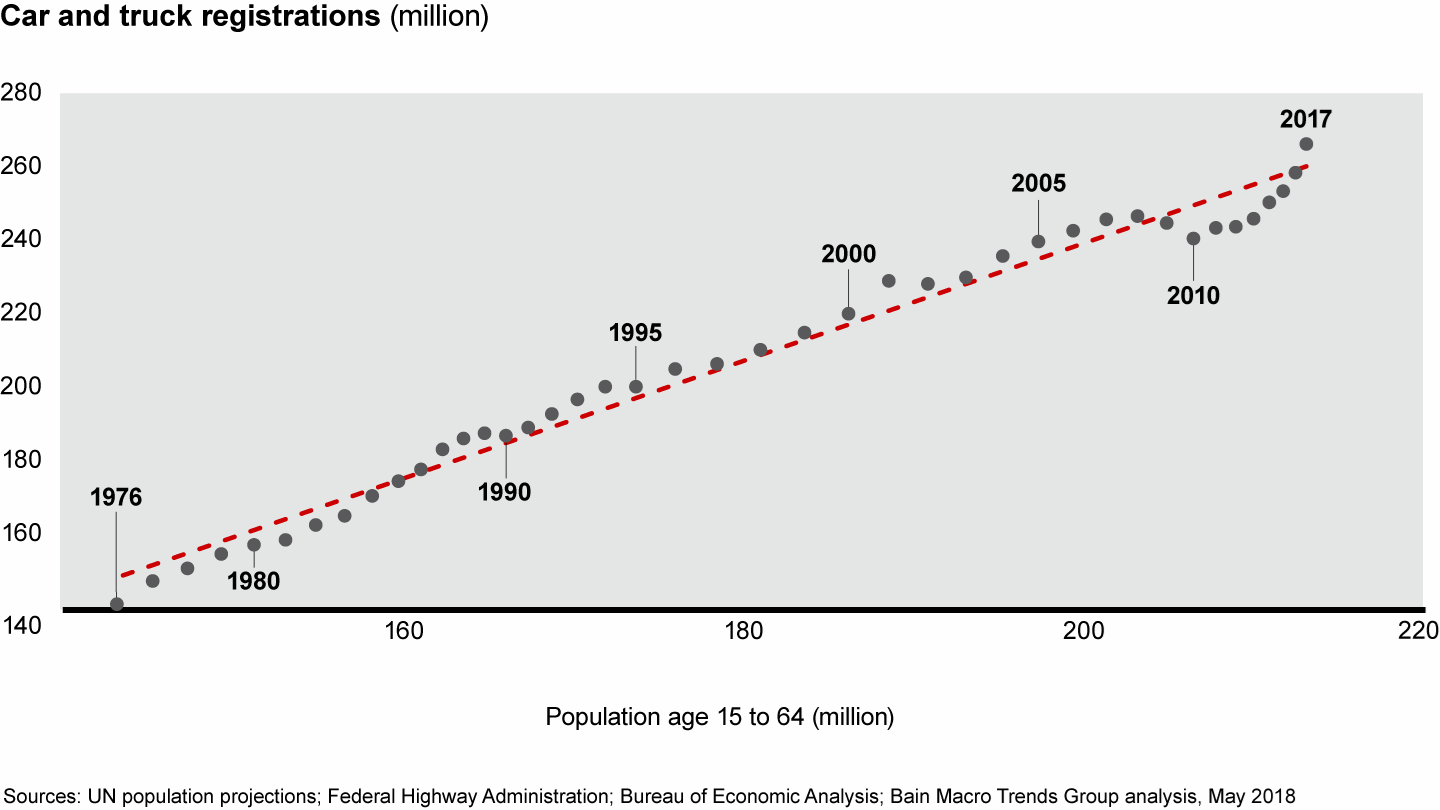
The net growth of the US driving-age population is rapidly approaching zero

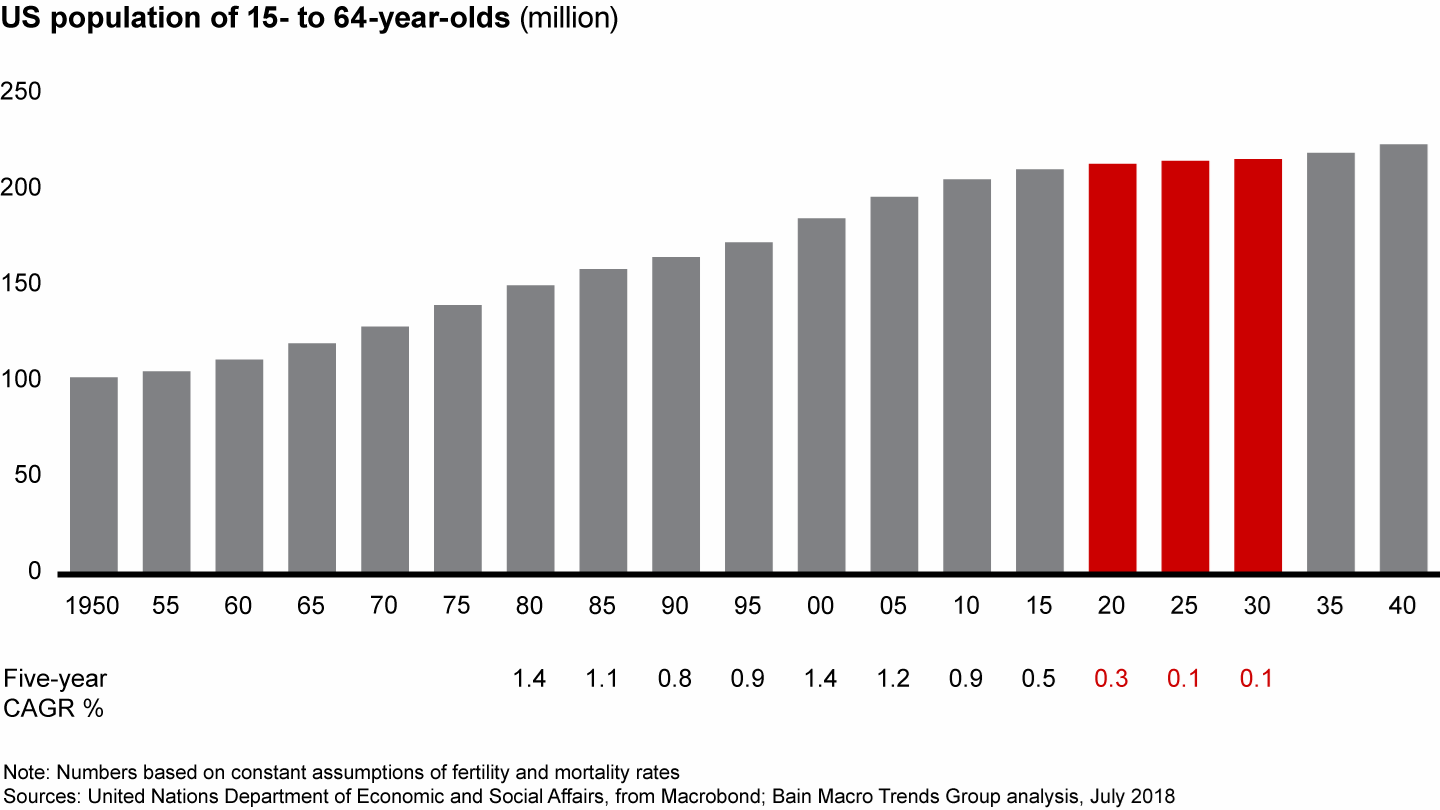
The collapse in auto sales in the coming years could be as severe as it was during the great recession, once again reducing vehicle sales below historic structural demand levels. Only this time, the sharply lower demand will be permanent. Our analysis suggests the total number of US vehicles now in circulation already includes 10.5 million cars in excess of structural demand, which is likely to deepen the sales decline in a recession. By the time the economy starts to recover, changing demographics will have significantly reduced the total pool of potential car buyers.
A third shock will hit the industry in the mid-2020s, as electric vehicles reach a tipping point. The magnitude and speed of the coming disruption to internal combustion engines could match that which Nokia and Blackberry faced when Apple launched the iPhone. As customers flocked to Apple’s hot new swipe-screen phone, the market value of Nokia and Blackberry plummeted. Eventually, sales collapsed too, leaving both companies with stranded production costs and supplier contracts that were impossible to unravel.
How might the coming storm play out for automakers? By 2022, all-electric cars will start to gain traction. Already, automakers have announced more than 100 all-electric vehicle models for 2022, and the list is growing. At the same time, companies developing driverless autonomous vehicles will have piloted them in multiple cities and declared them ready for commercial sale. Original equipment manufacturers (OEMs) positioned to take advantage of the rapid adoption of electric vehicles will outpace slower competitors. Suppliers of automotive parts for internal combustion engines will see their sales contract, and industry consolidation will accelerate. One set of winners will be the first companies to sell internal combustion engine assets—which may be at their peak value today—and innovate in developing the market for electric vehicles. Others will seek to consolidate the market for internal combustion engine vehicles, using low costs to create a viable niche as the last man standing.
As autonomous electric vehicles become commercially viable, around the mid-2020s, shared mobility services will flourish and consumers will begin reducing the number of vehicles they own as the result of two trends: the growing use of inexpensive robo taxis and the replacement of two or more household vehicles with one autonomous vehicle. That shift, in turn, will lead to fewer driver’s licenses among the next generation of drivers.
The rise of robo taxis and autonomous vehicles also will decrease car ownership, further depressing not only total automotive unit sales, but new and used vehicle prices. Households with two or more vehicles currently own roughly 65% of all vehicles in the US, and autonomous cars will offer many of them a meaningful way to reduce their expenditures, by more than $3,000 a year, our analysis shows. Ride-hailing services already have prompted consumers to start paring the number of vehicles they own. It’s not surprising: Transportation cost as a percentage of family income is second only to housing.
The one-two punch of electric and autonomous vehicles will wreak havoc on the global automotive value chain. Traditional auto dealers will suffer a steady structural decline in every profit source, including new car sales, financing, repair and maintenance. Once distinguished by powerful brands, autos increasingly will become commodities, particularly to the next generation of consumers. As new automotive services continue to multiply, based on changing customer demand, OEMs will have less and less control over the market. Over time, auto manufacturers risk ending up as contract manufacturing companies, much like Foxconn: They provide the hardware while new innovators run the business, dominate the market, own the customer and earn the premium return.
Mobility platform companies with fleets of autonomous cars will quickly set up operations in large urban centers to secure scale and network advantages before other competitors enter the market. These pioneers will be less concerned about generating profits from the start. Being first and being the leader will create so much value that investors will be patient as companies build the business.
Innovators also will develop new vehicle designs in response to growing consumer demand for autonomous cars and evolving preferences. These designs will be based on “occasions of use,” such as vehicles for business commuters with Internet connectivity or trucks outfitted with bathrooms, showers, televisions and computers to transport families to vacation spots. Rapid adoption of these innovative designs will accelerate the market transformation for OEMs.
Autonomous car networks will start in urban centers and gradually spread to suburban and rural settings, threatening the traditional dealership model as fleet and shared mobility companies become primary buyers of cars.
The shift to autonomous vehicles will be particularly disruptive in the trucking and logistics industries, where it could eliminate millions of truck, taxi and distribution jobs. The first companies to adopt autonomous vehicles will have a cost advantage that’s likely to help them win market share not only from other trucking companies, but from rail transport as well.
The turbulence caused by the shift to electric and autonomous vehicles will affect many sectors of the economy. The scope of this article doesn’t include that broader impact, but it may be the subject of future articles.
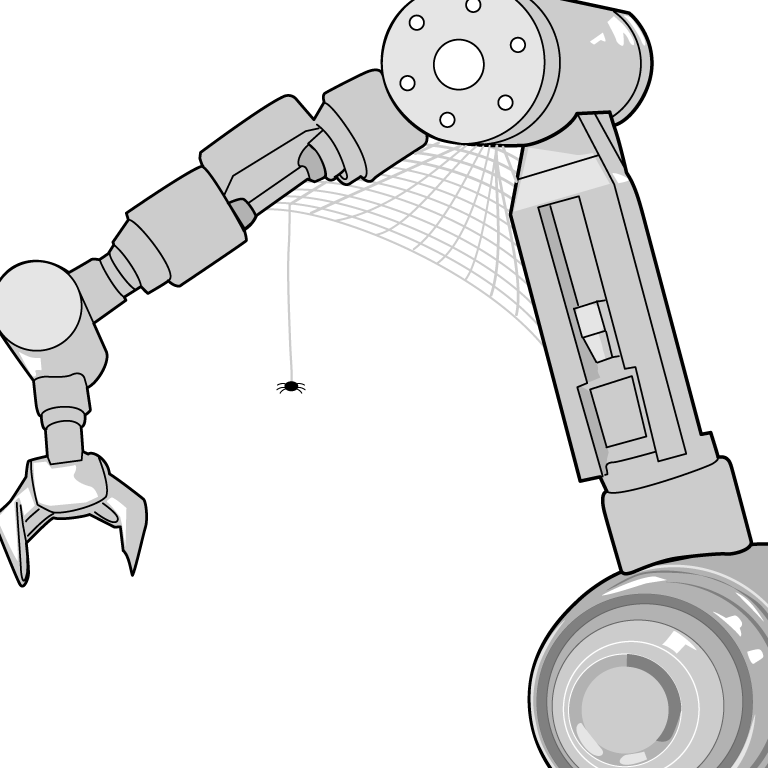
Automakers Face a Demographic Time Bomb
The industry is facing an uncertain future, but companies can still make smart bets to succeed.
Strategy in uncertainty
Companies that mobilize quickly around the right choices aren’t somehow better at predicting the future. It just seems that way. That’s because leadership has prepared the company for a range of futures in advance. How? They define which uncertainties the company faces and separate them into those that matter and those that don’t. Next, they create a set of probable and even extreme scenarios for how the future might unfold, including threats and opportunities for each. Based on those scenarios, the leadership team devises a set of strategic options that balance commitment to a course of action with the flexibility to adjust amid different scenarios. Finally, they identify a clear set of signposts of important changes in the marketplace, which signal when the company should take actions identified when planning scenarios.
That approach allows companies to be among the first to spot evolving trends—such as shifting profit pools or the speed at which new technologies take off in the market. Leadership teams can use that knowledge to move faster than their competitors, gaining market share and profitability from others. They build a strategy in uncertainty by investing in no-regret moves, developing options and hedges, and preparing for big bets. Let’s look at each of these steps in more detail.
No-regret moves. These are actions that improve a company’s resilience and generate benefits under any scenario, such as reducing costs or increasing operational effectiveness. One major automotive supplier, for example, has decided to cut $600 million in annual costs today as it prepares to invest in electric vehicle partnerships and acquisitions. The leadership team aims to use cash it generates to pay down debt and strengthen the company’s balance sheet. Preparing the balance sheet for adversity is one of the most important no-regret moves because if cash flow turns negative under any scenario, the ability to act strategically is often crippled. One way to improve the balance sheet is selling businesses that are likely to decline in the future, but still have significant value today.
Another important step is identifying no-regret investments. In periods of change, certain profit pools shrink and others grow, and often the trend is clear early on. Leaders adjust the investment levels in businesses where profit pools will shrink, or sell assets outright, and they position themselves through M&A or other capability building to participate in future profit pools.
Options and hedges. Successful companies avoid betting on every square because it risks underinvesting in all options. Instead, they develop strategic options aimed at specific scenarios, such as joint ventures that provide lower-cost market entry or project changes that add cost, but increase flexibility. To determine whether to bet on a given option, leadership teams calculate whether its value is greater than its cost under a variety of likely scenarios.
For example, when Ford Motor was building an assembly plant in Wayne, Michigan, and the associated tooling for its engine plants, the company had to decide which power trains to manufacture there. But it was unsure which of several power train types would dominate the next generation of vehicles—internal combustion, hybrid, plug-in hybrid, all-electric, fuel cell or diesel. The choice was between a dedicated plant and a more costly flexible plant. The leadership team calculated the costs of building a flexible plant vs. a dedicated plant that had to be retooled, and decided the option value of the flexible plant was greater than the extra cost.
Investing in every new market also runs the risk of having insufficient resources to capitalize on a winning bet. A far better approach is to watch the critical signposts that anticipate tipping points in costs or demand. An experience curve, used properly, can accurately predict when an economic shift is likely to accelerate or decline. It can anticipate a technological breakthrough, for example, even before one is announced. Analysts have consistently failed to predict the evolution of battery costs because their projections are based on known technologies (see Figure 4). But experience curves have accurately predicted the evolution of battery costs since 2008. Understanding penetration S-curves and their associated substitution barriers can help companies forecast the pace and speed of change, giving them a competitive advantage.
Electric vehicle battery-pack prices are dropping so fast that analyst forecasts can’t keep up

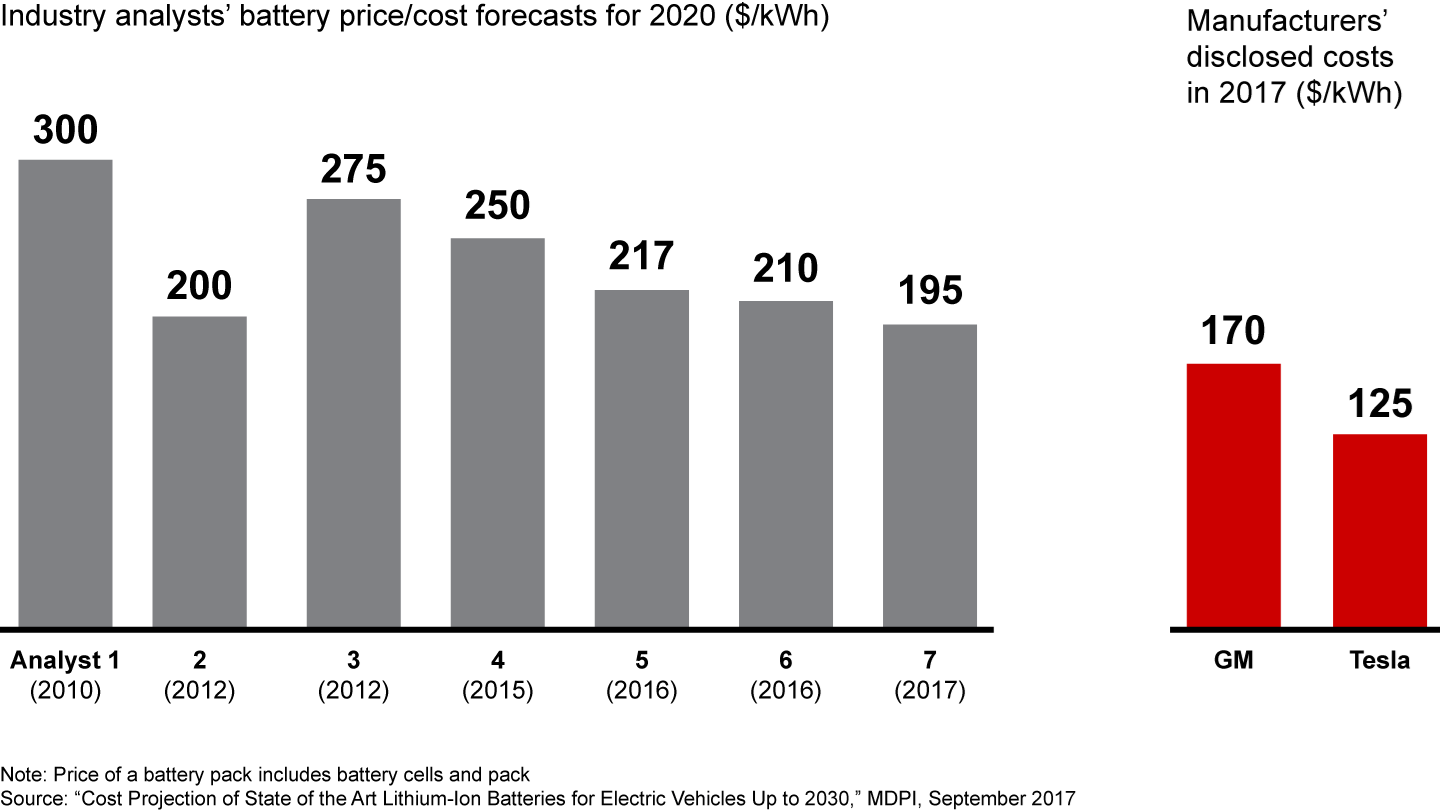
Similarly, designing a capital structure that’s resilient under multiple scenarios and ensures that investment cash will be available when volumes drop provides a hedge against financial distress and losing control of the company’s strategic direction.
To reduce the risk and shorten the time to payback, leadership teams should explore whether they can share ongoing development and investment costs in their core business with a partner. Volkswagen’s truck and bus unit Traton and Navistar recently opted for such a strategy in developing the next generation of diesel truck engines.
Reevaluating the supply chain is also critical. Some suppliers won’t survive the coming disruption. The risk for automakers is a domino effect, as failing suppliers suddenly force auto plants to shut down. Leadership teams should take a hard look now at their suppliers to identify the likely winners, and take actions to ensure a reliable supply through the transition.
Big bets. Timing is critical when making large-scale investments, since different scenarios will probably affect the payoffs of these big bets. Companies may wait to pull the trigger until it’s clear which scenario is most likely to play out. But advance planning gives them the critical flexibility to move quickly once they’re ready to invest. Identifying the right signposts before competitors do can give companies a valuable 6- to 12-month lead.
For automotive companies, a key signpost for the commercial takeoff of electric vehicles will be the moment the price of an e-vehicle model falls below the price of the same model with an internal combustion engine. In the case of autonomous vehicles, an important signpost will be the launch of the first large-scale commercial service. Waymo, Cruise and Uber plan to launch commercial services in 2019 on a controlled basis. Large-scale driverless services are further off, but investors are betting the shift will come sooner rather than later. The market capitalizations of the next generation of mobility companies such as Waymo, Uber and Tesla already have surpassed those of Ford and General Motors (see Figure 5).
Investors are backing up their bets on new mobility technologies and trends

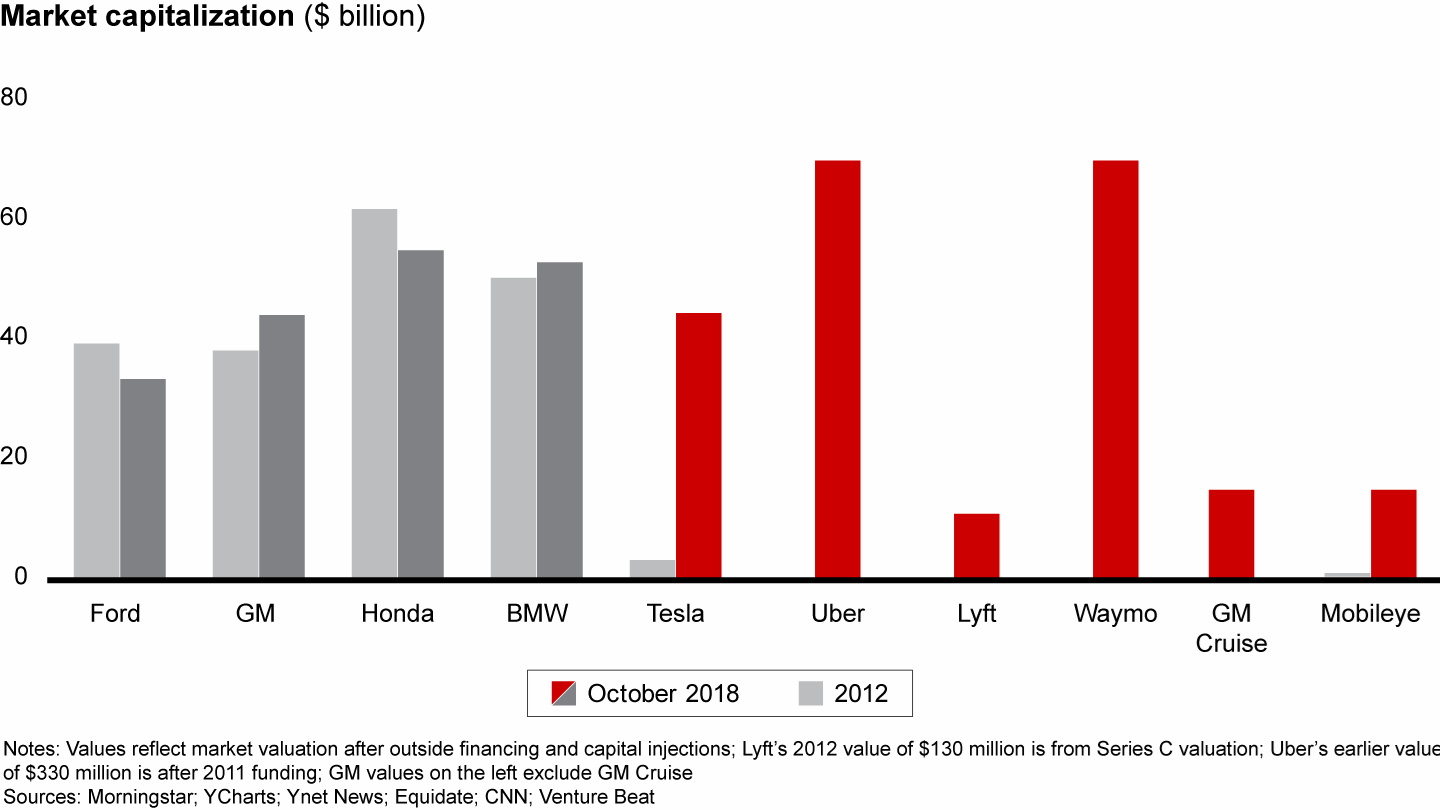
Other signposts are linked to demographic and behavioral trends that have already begun, such as the penetration of ride hailing, car shedding and the declining percentage of young adults getting their driver’s license.
Engine 1, Engine 2
One result of all the turbulence is that automakers’ core business—we might call this “Engine 1”—will decline. To grow and thrive in the future, they’ll need new businesses and new business models. Identifying an “Engine 2” early on can help companies pave the way for a smooth transition. A good example is GM’s purchase of Cruise. For the leadership team, the acquisition probably felt like a risky move, but it positions GM for future growth in the autonomous vehicle market. This “Engine 1, Engine 2” approach helped Netflix, for example, continue developing its then-core DVD business while it progressively invested in the rapid growth of the streaming business. Similarly, IBM shrunk its traditional hardware business while dramatically expanding its new software and service offerings. In each case, moving into Engine 2 meant new competition, new cost structures and new economic models to run simultaneously, and the new business took at least five years to flourish.
The two engines demand different approaches. The hallmarks of Engine 1 businesses are discipline, repeatability, small continuous improvements, careful risk assessment and investments that pay back quickly. The chief traits of Engine 2 businesses are agility, creativity and leaps into the financial unknown with the expectation that not every investment will ultimately pay off. Running both on parallel tracks raises some tricky questions, such as when Engine 2 should redefine Engine 1. Perhaps most fundamentally, is it better to build Engine 2 yourself, or monitor new capabilities and acquire them? Similarly, leadership teams should explore whether they can share ongoing development and investment costs in Engine 1 businesses with a partner to reduce the risk and shorten the time to payback.
Looking forward
The automotive, transportation, and logistics industries are headed for a series of economic shocks and technological disruption that will put much of the traditional auto industry ecosystem in structural decline. As yesterday’s business models fail, some companies will lose big, and others will win big. Companies that wait and react to change risk seeing their market capitalization fall, hampering their ability to invest. The leaders of the next era will be those who can pivot quickly and get out in front of change. Forging a smart strategy for the turbulent decade ahead means setting up the signposts to spot the tipping points and acting ahead of these market forces and the competition.
Mark Gottfredson, Klaus Stricker and Raymond Tsang are partners with Bain & Company’s Automotive & Transportation Vehicles practice. They are based, respectively, in Bain’s Dallas, Frankfurt and Shanghai offices.